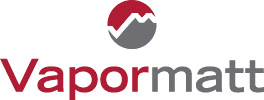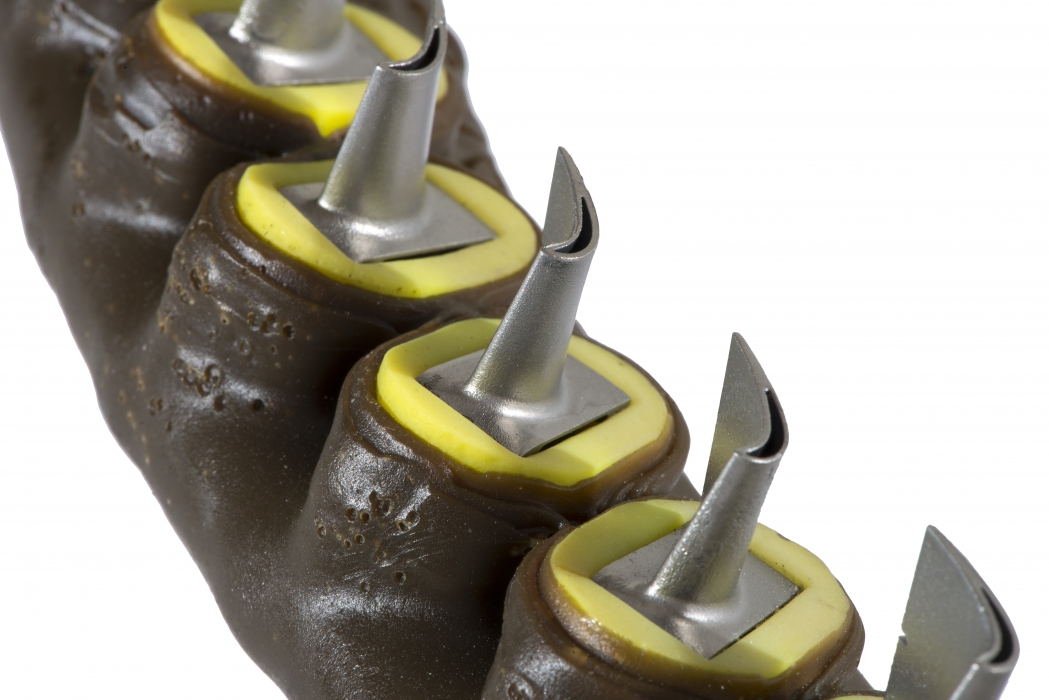Wet blasting is a surface finishing technique that uses a suspension of solid particles in a carrier liquid to treat the surface of a material. The principle is straightforward: liquid borne abrasive, or ‘slurry’, is mixed with a pressurised gas, pumped through a nozzle and accelerated across the material’s surface. The elements of the process can be varied widely in order to have a particular effect – from gentle dirt removal to full surface treatment. Heating the water and adding detergents and plastic ‘scrubbing’ particles makes it appropriate for cleaning; but ramping up nozzle pressure and incorporating harder medias like alumina or ceramic will prepare metal surfaces for processes like bonding or strengthen through peening. This guide will explain the principles of wet blasting, the advantages it offers, and some of the considerations for investing in wet blasting.
It means that a single process can achieve a wide variety of industrial tasks for aerospace surface finishing. The main mechanical alternative is dry blasting, but wet blasting is increasingly preferred because of its many advantages: versatility – as it can handle everything from gentle to tough tasks; safer working environments – as it creates no dust or charged particles; and better surface finish, due to the lubricating and cushioning effect of the liquid. Vapormatt has built up considerable expertise in wet blasting, especially in terms of automating and controlling the process. This guide will explain the principles of wet blasting, the advantages it offers, and some of the considerations for investing in wet blasting.
Why wet blasting?
Having developed some of the most versatile and controllable wet blasting systems Vapormatt have experience in providing solutions for a number of aerospace applications. Wet blasting is routinely applied on a range of aerospace components across the globe including:
- Peening of turbine and fan blades
- Preparation of surfaces for bonding, plating and painting
- Paint stripping – without substrate damage
- Degreasing, de-rusting and descaling
- General cleaning for overhaul and crack detection
By being able to change and control abrasive particles in the water, gun pressures, water temperature and a host of other factors makes wet blasting a versatile process with clear advantages. The type of abrasive particle used will have a huge effect. Aluminium oxide, for example, is used to achieve a ‘cutting’ effect and create a matt finish as it leaves a key on the surface. A silicon glass bead will give a ‘polished’ finish, while ceramic and steel particles will have effects of their own – such as peening for stress relief. Plastic medias can also be used for scrubbing and cleaning applications. There are many other medias that can be considered, including bauxite, glass, ice and even plum stones or walnut shell.
Changing the abrasive medium can change the process from one of cleaning to one of surface treatment. Water nullifies some of the inherent dangers of the dry blasting process, such as clouds of dust and charged particles – a potentially explosive mixture. It also reduces localised heating (through friction), making it particularly advantageous for surface treatment of sensitive substrates such as composites. But the main advantage of wet blasting is the superior surface finish achievable: the lubricating effect of wet blasting allows the slurry to flow across a components surface, giving a finish that is more uniform and much better prepared for coating, painting or bonding. And while these are its main advantages there are others too, which include:
- Small footprint of the capital equipment
- Low wear on parts
- Low breakdown of solid media and consumables
- Lower air usage
- Effective filtration of abrasive particles
- No need for pre-cleaning
Process specification
Slurry is the lifeblood of the wet blasting process. What comes out of a wet blasting nozzles may appear identical in every case – but many underlying parameters can be altered and controlled to allow huge variation in the process depending on the component being treated and its required application. The most advanced systems use software control to combine and monitor the flow of gas, air and solids, ensuring consistent results time and time again. Some of the process variables to consider are:
- The nature of the abrasive media – shapes, hardness and size
- Air pressure – which determines the speed at which the slurry leaves the nozzle and the kinetic energy of the process
- Chemistry – how alkaline or acidic the sump solution needs to be for cleaning or rust inhibition.
- The number, size – and angles of the nozzles used Changing these factors will alter the effect of the process.
By specifying and controlling these parameters, customers can – with Vapormatt’s help – carry out exactly the process that they need, whether it’s cleaning a composite surface or deburring a mould tool. Today’s most sophisticated wet blasting machines allow close control of media concentration, process temperature, additives and blast pressures. This leads to a consistent and reproducible process for surface finish that can also be changed with relative ease.
Component size
Once the process has been specified consideration must be given to its delivery. While the critical factor is how the final surface is achieved, wet blasting is not restricted by component size with machines built for everything from small fasteners to wing spars. With the latest process controls identical treatments can be delivered in different ways. A large number of small fixings, for example, can be treated in bulk in a tumbling barrel. But a part like a wing spar would be set up in a large chamber, then blasted by servo controlled nozzles moving across its surface. Components can be treated in protective blasting cabinets, in various sizes. Vapormatt’s offerings range from the Vapormate – a compact, manually operated model – to the Leopard systems which provide large working envelopes and automation for higher production capacities and components. Larger, custom-made systems are also available.
Manual or automatic?
Wet blasting was traditionally a manual process. For large parts, the operator would don a protective suit, pick up the blasting ‘gun’, and blast the surface of the part. Smaller parts were – and still are – treated behind the protective screen of a blasting cabinet. Some processes, such as cleaning aircraft wheels to test for underlying cracks, can also done manually. But as automation has become more prevalent in manufacturing, the same is true for wet blasting. There are two main reasons for choosing an automated process. For smaller parts, it is about volume: treating many separate parts by hand can prove impossibly costly. For larger parts, automation guarantees consistency. In highly regulated industries, such as aerospace, the quality of each part needs to be identical. This can be achieved by treating each one in exactly the same way, with no variation.
A good example is when treating the surface of an aerofoil, allowing a de-icing strip to be glued to it. Automated wet blasting ensures consistent cleaning of the surface, and guarantees an identical bond every time. Health and safety has also driven the move towards automation. Manually operated wet blasting machinery can have high vibration levels. This can be a hazard to operators, so can only be used for limited periods. Automating the process helps to banish this particular problem from the shopfloor.
Process monitoring
There are around 15 parameters to control in wet blasting. So even if the technique seems straightforward – and many people think it is – the details behind it are not. This large number of variants makes the process complicated to control. Despite this, Vapormatt has successfully managed to automate it; adopting the principle that if you can measure it, you can control it. A circuit diagram of the process shows the various parameters that must be controlled. All of these can be measured and adjusted. They include:
- Pressure and volume of air
- Slurry pressure
- Water temperature, pH and conductivity
- Filtration, rinsing, drying
- Gun (nozzle) angle, range and speed
And it’s not enough simply to measure these levels. The process must also be controlled – and, increasingly, this means automatically. Vapormatt is able to ensure that these and other critical parameters are monitored and adjusted automatically. Abrasive concentration can have the largest impact on surface finish, particularly as during wet blasting, the abrasive particles begin to break down. As this happens, the effectiveness of the process starts to diminish, meaning that more abrasive particles must be added to the slurry – but in the correct proportion. In the case of peening applications this is highly critical to ensure the coverage and intensity stay the same.
To maintain an optimal abrasive concentration of 15-20% relies on close monitoring and control of the process. Vapormatt does this in a very elegant way, using its patented elutriation towers. These work on the principle of Stokes’ Law, which states that the fall rate of a particle through a fluid is related to its size and density. So, as the slurry is recycled, it is fed into a column of water that is pumped upwards: heavier particles fall quickly to the bottom, while lighter ones remain at the top and are removed. The second stage of this process is to measure how many ‘good’ particles are left. This is done by constant monitoring of slurry density with a flow meter. By detecting when too many particles have broken down, new particles can be added automatically.
Aerospace: from cleaning to peening
The aerospace industry is a major user of wet blasting, for a diversity of operations. In effect, a whole series of individual aerospace industry processes can be achieved through this single technique. When aircraft tyres are changed, the wheels are inspected for cracks via non-destructive testing. First, the surface grime is removed using wet blasting – at a pressure low enough to remove dirt but not affect the paint layer. The technique has many other uses in the industry: removing paint; preparing composites; and degreasing. But by far the most robust example is peening. Peening is a technique that conditions the surface of critical parts like turbine blades. It puts the surface under compression to make it resistant to cracking, to extend service life a thousand-fold.
Peening is traditionally carried out by dry blasting, because it hits the surface with more force. But wet blasting is becoming more common: it produces a far smoother surface and is unlikely to introduce surface contamination – which is where cracks start.
One leading aerospace manufacturer has begun using Vapormatt’s wet peening process for this very reason. There is also an economic argument, as it already uses wet peening for many other operations. Ultimately, it is this versatility that makes wet blasting of ever-growing importance to the aerospace industry.
About Vapormatt























